#outdoor education
Text
Shout out to the National Park Service for doing the work 🌲 🏔️ 🦅🌵🦌🍄🍂🌳🏕️

And a reminder to hug your local park ranger, but ask first, not all of them like it
#national park#nature#national park service#national parks#park ranger#the great outdoors#protect our wildlife#wildlife#conservation#outdoor education#naturecore#nature conservation#can you paint with all the colors of the wind
183 notes
·
View notes
Text
Why Are So Many of My Foraging Classes Online?
Fall semester has started, which means a whole new round of classes. While I don’t get as much consistency in who’s attending compared to someone teaching credit courses where an entire cohort may take multiple classes from the same instructor, I still get to enjoy both the fun of meeting new students, and also seeing some familiar faces from folks who decided to take another class from me. It’s also a time for fielding a variety of questions leading up to various classes; some of them are unique, but I can usually count on a roundup of the usual queries like whether students will need any materials, if online classes will be recorded, and whether the term “remote” on a foraging class equals “foraging classes online” or “foraging classes in remote areas.” (I didn’t choose the term; it’s one that some of the community colleges and other venues I work with prefer.)

I always clarify that remote classes are, in fact, online. It may seem a little counterintuitive to be holding a class on looking for edible mushrooms and plants virtually. But there are a few good reasons for it.
First, while I was teaching pre-pandemic, I and many other educators ramped up our Zoom classes when people went into lockdown at the beginning of the pandemic in late winter of 2020. That coincided with a surge in interest in foraging classes at the same time. Some folks were now sitting with a bunch of time on their hands where they didn’t have to work, and thought about things they wanted to learn about but had never had the time for. Others were concerned about the food shortages at grocery stores, worried that the pandemic would exacerbate issues with supply lines, and wanted to look for alternative ways to acquire food. So I put together the online mushroom hunting and PNW foraging classes I’ve taught since then.
And they’ve been continually popular ever since then. The one silver lining of the pandemic was that it increased the infrastructure for online classes, making them more appealing and accessible to people, as well as easier for instructors to use. I’d never even used Zoom prior to that point, and while it’s been a bit of a learning curve since then I’ve mostly gotten the hang of it.
But I also like online classes because they’re accessible. I can offer a variety of one-time classes through numerous venues, often with regional information customized into each class, and people can choose from multiple dates and times. Moreover, not everyone is physically able to go out into off-trail land looking for mushrooms or plants for several hours, but they still may be interested enough in foraging in less rugged places at their own pace and want a concise introduction to what they need to know to get started. And some folks who are immunocompromised aren’t comfortable going to in-person classes, whether inside or outside, so online classes are a safe alternative.

Time is also a consideration; it’s a lot easier for people to set aside a couple of hours to listen to a Zoom class on a weekday evening or Saturday morning, than to commit to traveling to a place, spending X number of hours out in the field, and then traveling back home. I’ve even had attendees multitask during classes with household chores, making art, etc.–as long as they can pay attention to their satisfaction, I’m fine with it. It’s also not uncommon for someone to be unable to attend the live class, but to watch the recording instead and email me questions afterward.
And, of course, there’s the fact that I live three hours away from Portland and about the same distance away from the Olympia-Tacoma-Seattle area, where a lot of my classes are based. I wouldn’t be able to teach nearly as much if I did everything in person. At this point I offer the better part of 100 individual class sessions a year, hosted by venues from Oregon to Connecticut, and having most of my nature and foraging classes online means I can reasonably reach a lot more people who wouldn’t have access to my in-person classes.
Is it the same as going out in the field and foraging? Of course not. I can give people detailed information on identifying new-to-them species, and tips for safe and effective foraging, and some photos of beginner-friendly plants and mushrooms. But that’s not equivalent to going out to a place, exploring it on foot, and seeing different species in the context of their habitats, handling them and doing live identification right there in the field.
Sometimes I’m able to offer a workaround; every spring, summer, and fall through Portland Community College, for example, I offer a Nature ID Field Day open to anyone who has taken any of my online identification classes (foraging, mushrooms, birding, etc.) It’s a chance for participants to make use of the identification skills and tools we discussed online, and try them out in person. While we don’t only focus on foraging, we usually find some things along the way that happen to be edible. Plus it’s a good excuse to spend a few hours outside with other nature nerds!

And I do other in-person events now and then for various venues,like nature walks and indoor classes. Plus I’m trying to get the immense amount of paperwork pulled together to legally be able to offer independent guided tours in 2023, which will provide even more opportunities to work with people in person in the field.
But I will always have some natural history and foraging classes online, because I think it’s an incredibly important format for reasons I’ve already described. It’s not for everyone; some folks will always prefer in-person events, and that’s completely understandable! From the feedback I’ve gotten, though, demand for online classes isn’t going anywhere anytime soon, and I’m glad I can make them available to so many people.
Did you enjoy this post? Consider taking one of my online foraging and natural history classes, checking out my other articles, or picking up a paperback or ebook I’ve written! You can even buy me a coffee here!
#foraging#nature#classes#foraging classes#mushrooms#wild foods#outdoors#accessibility#long post#insects#bugs#hiking#outdoor education#wildlife#online classes#mushroom hunting#mushroom foraging#nature nerds
18 notes
·
View notes
Text
#Liverpool John Moores University#LJMU#IM Marsh Campus#higher education#undergraduate studies#postgraduate studies#professional courses#technical courses#Dance Studies#Sport Development#Physical Education#Applied Community Studies#Social Studies#Community Nutrition#Consumer Studies#Marketing#Food and Nutrition#Home Economics#Tourism Management#Education Studies#Outdoor Education#Adventure Tourism#OFSTED inspections#TTA category A status#PE secondary initial teacher education#Liverpool#LJMU popularity#quality teaching#personal tutoring#academic facilities
0 notes
Text
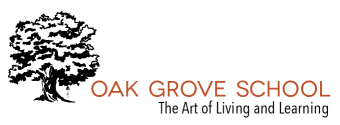
It is becoming more and more important in a world that is destructive and degenerating that there should be a place, an oasis, where one can learn a way of living that is whole, sane, and intelligent. Education in the modern world has been concerned with the cultivation not of intelligence, but of intellect, of memory and its skills. In this process little occurs beyond passing information from the teacher to the taught, the leader to the follower, bringing about a superficial and mechanical way of life. In this there is little human relationship.
Surely a school is a place where one learns about the totality, the wholeness of life. Academic excellence is absolutely necessary, but a school includes much more than that. It is a place where both the teacher and the taught explore not only the outer world, the world of knowledge, but also their own thinking, their behavior. From this they begin to discover their own conditioning and how it distorts their thinking. This conditioning is the self to which such tremendous and cruel importance is given. Freedom from conditioning and its misery begins with this awareness. It is only in such freedom that true learning can take place. In this school it is the responsibility of the teacher to sustain with the student a careful exploration into the implications of conditioning and thus end it.
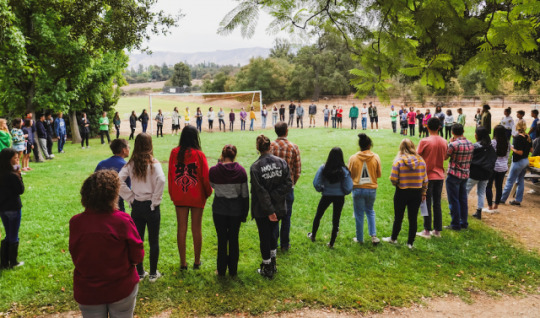
A school is a place where one learns the importance of knowledge and its limitations. It is a place where one learns to observe the world not from any particular point of view or conclusion. One learns to look at the whole of man’s endeavor, his search for beauty, his search for truth and for a way of living without conflict. Conflict is the very essence of violence. So far education has not been concerned with this, but in this school our intent is to understand actuality and its action without any preconceived ideals, theories, or belief, which bring about a contradictory attitude toward existence.
The school is concerned with freedom and order. Freedom is not the expression of one’s own desire, choice, or self-interest. That inevitably leads to disorder. Freedom of choice is not freedom, though it may appear so; nor is order, conformity, or imitation. Order can only come with the insight that to choose is itself the denial of freedom.

In school one learns the importance of relationship which is not based on attachment and possession. It is here one can learn about the movement of thought, love, and death, for all this is our life. From the ancient of times, man has sought something beyond the materialistic world, something immeasurable, something sacred. It is the intent of this school to inquire into this possibility.
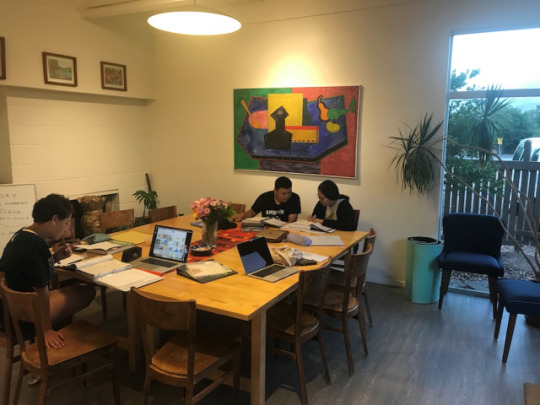
This whole movement of inquiry into knowledge, into oneself, into the possibility of something beyond knowledge, brings about naturally a psychological revolution, and from this comes inevitably a totally different order in human relationship, which is society. The intelligent understanding of all this can bring about a profound change in the consciousness of mankind.
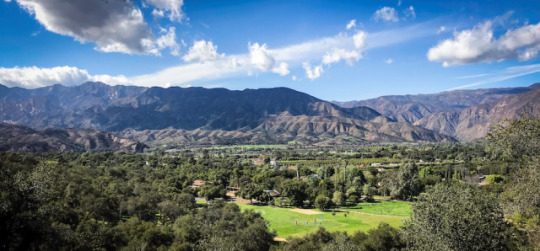
#small school#relationship based#progressive education#PK-12#Outdoor Education#krishnamurti#independent school#high school#college prep#boarding school
0 notes
Text
I delivered my first lesson plan in front of one of my classes today! They are all a few years ahead of me so it was pretty nerve wracking, but I think it went really well! It was a trauma informed/healing centric lesson about connectivity and environmental degradation geared towards K-2nd.
I wanted to focus on the feeling of helplessness a lot of young learners get from learning about the environment, and teach them it's okay to feel those big feelings, and even though there are bigger systems that hurt the Earth working together and building your community around helping the earth can still make a difference. I really wanted to emphasize that students can still help the earth without pollution coming through as an individual/carbon footprint issue. I have so many thoughts about where else I can go with the plans I have.
#education#educators#outdoor education#I feel like theres a likelihood that people i go to school with are also on Tumblr so if you know no you don't#lesson plan#teaching#teachers#college
1 note
·
View note
Text

Early Childhood - Caring for Animals
This student is intently watching on of our chickens eating the feed she spread on the ground. Having animals to care for helps teach responsibility, compassion, empathy, and an understanding and respect for other living things. Animals teach children to value life other than their own, in addition to teaching them about the natural growth and life cycles of many different species which they can observe on a daily basis. Another benefit is the stress reduction that occurs as a result of observing and interacting with the animals, from which both the children and the animals can benefit.
#animal husbrandry#sustainability#care for animals#purposeful activity#outdoor education#social-emotional development#hands on learning#independence#responsibility#compassion#empathy#respect#tma#montessori#private school#arlingtontx#arlington#texas#infant#nido#toddler#early childhood#preschool#kindergarten#elementary#education#private education#nontraditional#the montessori academy of arlington
0 notes
Text
The yearly return!
As per usual I have returned from my 6 months work abroad and will be posting all the stuff I made and never got a chance to post. Expect more posts for at least a month or so before I'm off travelling again.
#crafts#art#work abroad#seasonal worker#wannabe canadian#outdoor education#summer camp#needle felt#needle felting#punch needle#punch needle embroidery#custom toys#rubber ducks#custom rubber ducks
0 notes
Text
....we have an old outdoor training called Take It Outside and I just realized this means in like 50 years someone could conceivably call a similar training Go Touch Grass.
1 note
·
View note
Link
Trinity Grammar School offers boys a thoroughly Christian education and an outdoor education that guides them to a full life. Their outdoor education programme provides opportunities for self-discovery, building relationships, exploring new ways of being in community together, and providing time for self-reflection and spiritual growth in a unique environment. For more details, visit https://www.trinity.nsw.edu.au/2022/08/06/what-is-outdoor-education-in-nsw-schools/
0 notes
Text
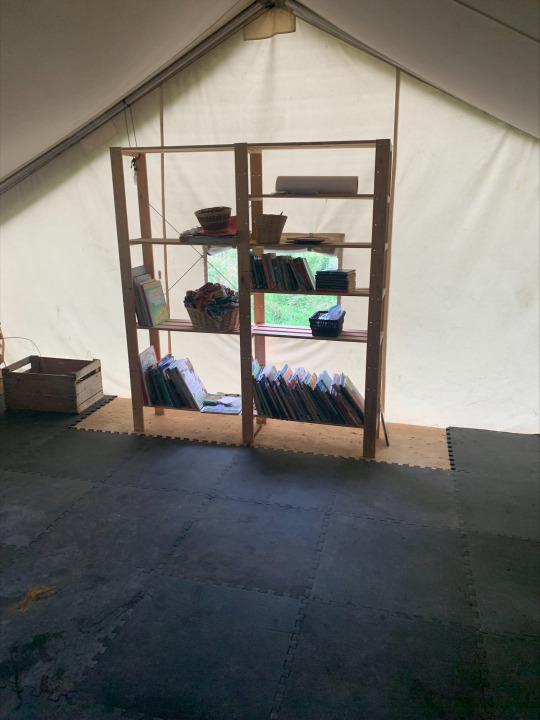
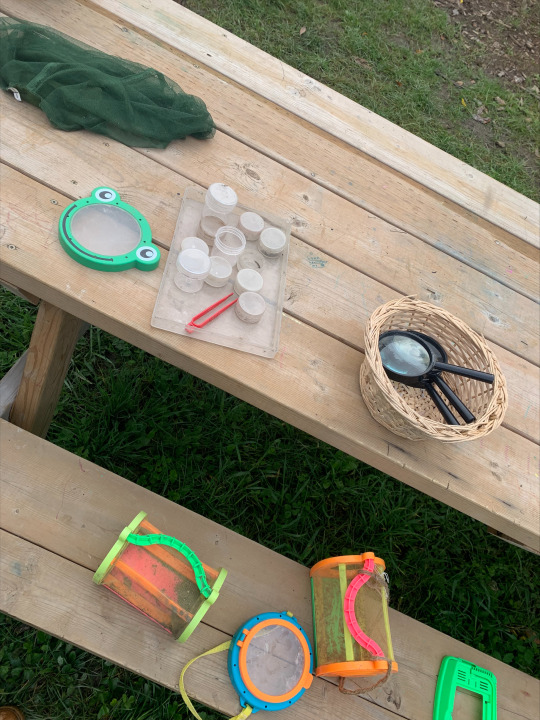

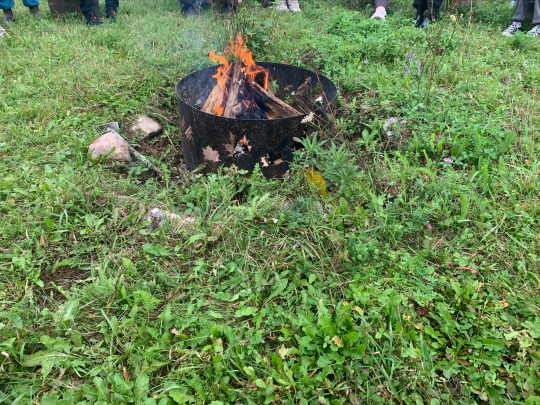
On Wednesday, September 21st, my class took a field trip to Out to Play Farm & Forest School. I absolutely adore the idea of a Forest School. In fact, it was my passion for outdoor education which partially motivated me to start the Early Childhood Education program at Algonquin, in the first place!
On the morning of our trip, students were lead on a brief walk through the woods by one of the Educators, a woman named Lara, until we came to a clearing in the wilderness. We were in a field; I noticed a green house looking building in the background and a firepit surrounded by logs. We gathered in a circle around the firepit while Lara introduced us to the concept of a Forest school, and what an average day in the program was like for the children who attended.
After our circle time, we followed Lara on a tour of the grounds. I noticed a puddle of muddy water with a plank across it, it intrigued me, so I snapped a picture. I wondered why there was a plank over the puddle, was it there to prevent the children from falling, or had a child placed it there intentionally so that they could practice balancing walking across it?
We continued, and I noticed what looked materials for a science activity out on a picnic bench. Again, I took a photo to document my observation. I noticed magnifying glasses, little mesh cages to catch bugs in, and even smaller specimen jars. The set-up reminded me of everything I have been learning in my Math and Science class about curiosity and experimentation, especially exploration of the natural world and the many academic opportunities the outdoors has to offer.
Next, we arrived at one of the tents on the Out to Play campus, one of a few indoor spaces at the program. I noticed there was a wood burning stove inside, mats on the ground for children to sit comfortably on, and a bookcase. I took another photo. I was reminded of what I had learned in my Environments for Young Children course last year and identified this area as a reading zone. Lara explained that in the winter season, the children also use the space to warm up and dry their wet clothes.
I greatly enjoyed our trip to the Forest School, I feel like I learned so much about what it is like to work in that kind of a program (which I want to do), as well as it was a chance to make real-world connections to the concepts I have been and am currently learning in my own program. This experience sparked my curiosity, and I wonder how the Educators manage the various health and safety risks that come with running an outdoor education program year-round in a climate that ranges from 30+ to -30… Lara showed us some paperwork that they had in the program identifying some risks and the actions they took to amend them, but I would like to know more information.
#forest school#early childhood education#ece#Outdoors#outdoor education#alternative education#school#academics#college#kindergarten#preschool#montessori#education#teacher#educator#nature#go outside
0 notes
Text
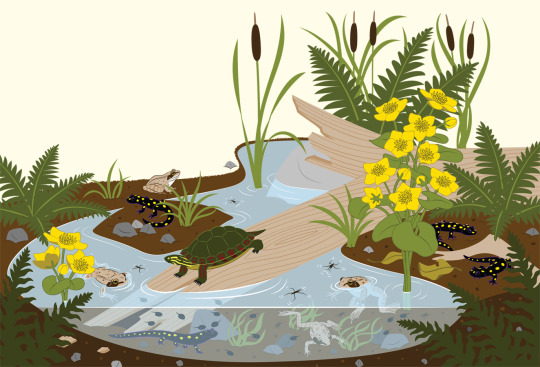

Went out to the pond to take this photo, and heard the first spring peepers of the year. Yay! It's officially spring in Downeast, Maine.
This illustration is one over 100 I did for the forth Nature Smarts activity book from Mass Audubon and Storey Publishing. Nature Smarts Workbook: All About Water, Ages 4-6 is available for preorder now, and out May 21st. You can find it through Amazon, Mass Audubon, and other book sellers.
#vernal#pond#pool#amphibians#frogs#illustration#jada fitch#art#maine#drawing#nature#naturalist#kid's illustration#kid#children's#outdoors#outdoor#activity book#outdoor activities#kids#workbook#ages 4-6#educational#mass audubon#homeschool#new england#wildlife#water#all about water#vernal pond
98 notes
·
View notes
Text
The most salient point to me in all this is that he used an unnamed ID app to try to figure out what mushrooms he found because he thought "Man those look good." The app misidentified the mushrooms as edible puffballs, but in reality they were destroying angels (Amanita ocreata). One is enough to kill an adult, and this person ate four of them. He's very, very lucky to be alive.
This is far from the first time someone put their entire faith in a single app to tell them what mushroom they were looking at, and then they paid the price with their health. You're going to hear me say this again and again: never, ever, ever use an app as your only tool for identifying anything, especially if you're planning to eat it. An app can be useful in conjunction with other tools like books, websites, online foraging groups, etc. But apps are frequently wrong, and are not the easy answer many people seem to want them to be.
(Rant about foraging below the cut.)
This right here is why I spend a decent amount of time in my foraging classes trying to scare the hell out of my students. I want them to understand the risks, not just as a brief aside, but as anecdotes I've collected from the news over the years like this one. I have had more than one person say afterward "Wow, I had a really romanticized view of foraging, and now I'm going to be more careful." That's a clue to me that I've done my job.
It's why my classes are SO focused on identification skills and tools to make you a more informed and careful forager. I am not going to just spend a bunch of time showing you slides of all sorts of edible species, with a little bit of information on how to identify and collect them tucked in before or after. Yes, we do look at some beginner-friendly species near the end of the class, but if all you want to get out of a foraging class is names and pictures of edible plants or fungi, that's what field guides are for. I spend the bulk of the time doing my absolute best to make sure people are PREPARED to go out and use their observational and critical thinking skills when assessing a new-to-them species, to include making use of many different types of resource, not just a single app.
I have literally had people complain that we spent too much time on "boring" stuff, and not enough on the edible species themselves---aaaaaand I don't care. My goal is to try as hard as I can to make sure incidents like the article above don't happen in the first place, which is going to take more than a couple of hours of looking at pretty pictures of mushrooms. Sure, sometimes all you get is a night of bad indigestion, but if you get one of the really nasty species full of amatoxins, you can die. Or end up with permanent liver and/or kidney damage. Or need an organ transplant.
And yes, as I said, you will get information on some species that I think are relatively beginner-friendly because they're distinctive AND they don't have any really serious poisonous lookalikes. But puffballs aren't on that list, and this article is a perfect example of why.
#foraging#mushroom hunting#mushroom foraging#mushrooms#mushroom#fungus#fungi#shrooms#wildcrafting#wild foods#food#poisonous mushrooms#toadstools#educational#outdoors#nature
101 notes
·
View notes
Text

Midland School provides a unique college preparatory boarding school experience to a diverse student body.

Through study and work, it teaches the value of a lifetime of learning, self-reliance, simplicity, responsibility to community and the environment, and a love for the outdoors.

#working ranch#Outdoor Education#nature school#horses#high school#experiential learning#college prep#boarding school
0 notes
Text
My Connection to Nature & It's Evolution
Hey everyone, welcome to my blog!
Today I'll be discussing my relationship with nature and its evolution over the years.
As I’ve progressed through university, I’ve found myself developing a greater appreciation of nature. Not that I ever didn't respect or appreciate it, but it was just always there, so I never took the time to truly immerse myself in its entirety. That's kind of the reality of growing up; you learn that life isn't simple and easy but rather that things can change quite quickly. When I was a kid I never thought about the future of the planet or of the colossal impacts we have on our environment. Now that I’ve grown up and taken classes detailing the science behind our planet and environment, I know how fragile it is and how unpromised its future is.
I grew up in Sudbury, Ontario. Sudbury is a city in northern Canada known for its rich natural surroundings and historical significance. The city is located on the Canadian Shield, and as such, has an abundance of rocky terrain and greenery. My house was 30 minutes out of town and ‘deep into the bush’ as some would say (I've included a picture below for context). Due to this, I was surrounded by forests and lakes with really no urban influence. Living there, surrounded solely by nature, I found a “sense of place”. Nature was not just a backdrop in Sudbury; it was an intrinsic component of my daily life. The trees provided a safe place, the lakes brought serenity, and the hard terrain was like a huge playground. Growing up I had a deep connection with the land, creating memories that were linked with the rustling of leaves, the smell of fresh pine, and the cool winds that blew around us while we played outside. As we had no real neighbours and about 140 acres of land with our house, me and my brother were often left to do whatever we pleased outside. This allowed us to fully immerse ourselves in nature and, honestly, gave us no other choice even if we didn't want to play outside. There was nothing even remotely close; just us and nature. This led to me having a more recreational connection to nature. I think this is why as a child I never truly appreciated nature, as I thought that it was just standard to always have it around us. It was only when I was old enough to understand the realities of the world that I developed a stronger appreciation for nature.

Over the last several years, I've been fortunate enough to have taken various courses and learned a lot about nature. So far, Climate Change Biology (ENVS*3010) has by far been my favourite and truly opened my eyes about our impacts on the environment. As a result, my viewpoint on nature as a whole has changed significantly. I have also developed new kinds of connections with nature recently, including therapeutic, scientific, and sustainable-based connections. I now use my early memories as a source of reflection and thankfulness, displaying the long-term evolution of my relationship with nature.
I also have such a love for nature as it allows me to spend time with my family. Going out for walks and looking at all the diverse scenery is a great way to clear your head and take in its beauty. Recently, I've been training my new puppy how to walk on her leash. My parent's house is up north still so there aren't any sidewalks. Due to this, it's been challenging to get her to stay on the side of the road and walk off the paved road when cars pass. She seems to love cars so this has been quite a challenge. Especially when she tries to run in front of them or after them 🙃

7 notes
·
View notes
Photo

Early Childhood - Outdoor Classroom
Think about how much time this student devoted to accomplishing his goal, only to feel great satisfaction at the result of his efforts. He spent quite some time, experimenting and problem solving to come to the conclusion that, "I am only using the flatter ones so it stacks better."
"Education is not something which a teacher does, but that it is a natural process which develops spontaneously in the human being. It is not acquired by listening to words, but in virtue of experiences in which the child acts on his environment."
- Maria Montessori
#intrinsic motivation#outdoor education#problem solving#hands on learning#experiential learning#nature#experiences#order#concentration#coordination#independence#tma#montessori#private school#arlingtontx#arlington#texas#infant#nido#toddler#early childhood#preschool#kindergarten#elementary#education#private education#nontraditional#the montessori academy of arlington
1 note
·
View note
Text
Feel free to skip on past this, I’ve just gotta ramble for a minute bc i cant stop thinking about this kid from work last week. They were so much like me at that age (5-6th grade) that I didn’t know how to interact with them? I didn’t know what to say to them bc I don’t know what I needed to hear back then, what I would’ve WANTED to hear? What would I have even listened to? They were almost entirely silent and looked out at the world with a hesitant curiosity, but would pull back so fast as soon as you tried to interact w them. Little to no eye contact, face hidden in hair, always looking down, following others until they could strike off on their own and just quietly explore. Intently focusing on drawing any chance they got. We did an art project and they hunched over their piece the entire time and wouldn’t let any of us see it in progress, refusing to look up or acknowledge us if we asked to see it or to know what it was. Idk. I barely interacted w them while they were with us for those few days bc I didn’t know how? It almost hurt to try? It was like looking back into a time machine and i didn’t know how to tell them that it does get better,,, I still don’t even know if where I am is better, some days feel so unsure that I don’t think I’ve made any progress at all. But seeing that kid, idk. I’ve come pretty far. And it DOES get better. Maybe it’s not the best now, or even that great at all, but it’s better. I wish I could’ve told them but I don’t think they’d have wanted to hear it anyway
#im a rambling sam#I’m in a weird place again since getting here for this season of work#idk maybe I’ve been in a weird place all year probably#I don’t think I’m that far from where I was at that age but I know I am there’s just still so much further to go#one day I think it’ll feel easier but maybe not today#I do love working w kids but I’m considering going into horticulture instead of outdoor education bc I don’t know if I can handle this#I can#but god I don’t know#in my heart I’m still that exact kid and she’s still in there so damn anxious and unsure and needing to observe the world and everyone in it#just to get some sense of understanding of just what the fuck is going on around here#but by the time I’ve gotten a good handle on what is going on everything is already so set in place and my place is outside the system and I#I don’t know how to step into it#sorry sorry I’m still rambling I’m having a weird day I probably just haven’t eaten nearly enough in the last few days and I’m about to#start teaching on my own this week which is terrifying and I can’t stop thinking abt that damn kid I wish they stayed longer I think#we probably would’ve gotten along#but groups only come here for a couple days and then go home which is v weird after having the same kids for 3 weeks for summer camp#idk life gets better and it gets worse and sometimes u grow into the world a little more but there’s still a mute child in your ribcage#little hands pressed up against ur ribs like laying a palm against a bus window#I put my hand over my sternum as if we could press our hands together thru time#when I was that age I used to pretend to have someone around me like an imaginary friend but usually it was a book character that I liked#and I’d talk to myself in my head like having a conversation and giving myself motivation and assurances from someone else to me#and now I’m here and I still talk to myself like that but without the imagined friend as a buffer I just talk to myself in my head#now I’m the imaginary friend for the little Sam that lives in my chest#when I talk to myself I’m talking to her#I’m giving her the assurance she needed back then#the assurance I still need now#I am here for her so I am here for myself#this is getting poetically nonsensical maybe it’s time for bed
9 notes
·
View notes